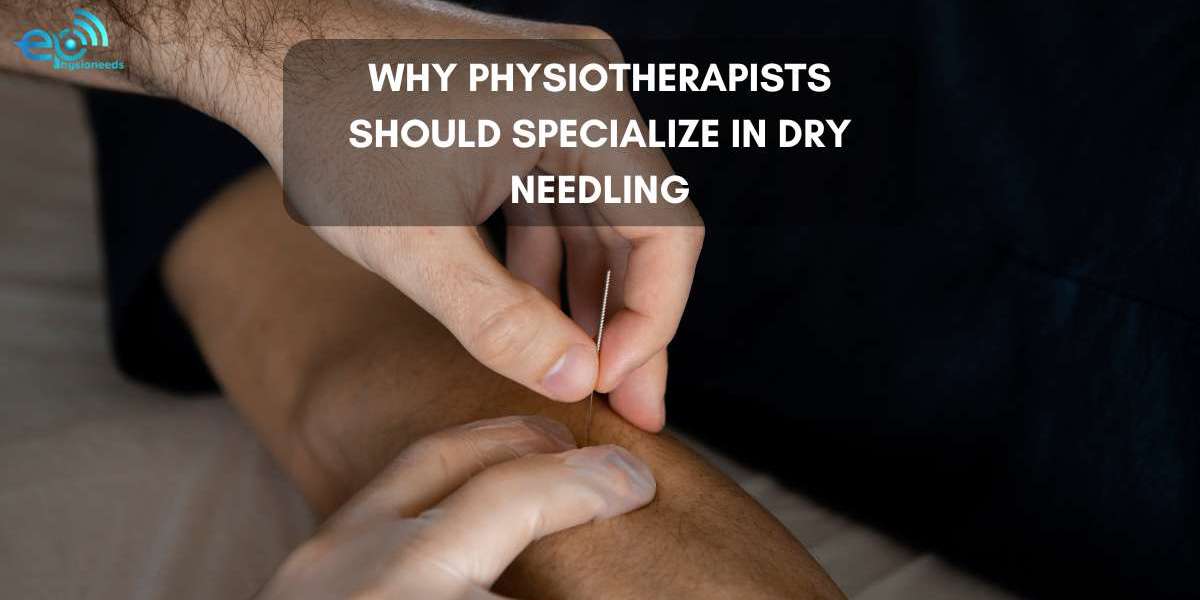Dry Needling is becoming an essential skill for physiotherapists seeking to enhance their practice and provide better patient care. This technique involves inserting fine needles into myofascial trigger points, muscles, and connective tissues to alleviate pain and improve mobility. Unlike acupuncture, dry needling targets musculoskeletal pain and dysfunction, making it an effective tool in physiotherapy.
1. Improved Pain Management
One of the most significant benefits of dry needling is its ability to manage pain effectively. Physiotherapists often encounter patients with chronic pain, musculoskeletal disorders, and myofascial pain syndrome. Dry needling helps reduce muscle tension, release trigger points, and restore normal tissue function, leading to faster pain relief. By incorporating dry needling into treatment plans, physiotherapists can enhance their pain management strategies and offer immediate benefits to their patients.
2. Faster Recovery and Enhanced Mobility
Dry needling accelerates the recovery process by improving blood flow and reducing inflammation in targeted tissues. This allows patients to regain mobility more quickly and return to their normal activities. For physiotherapists specializing in sports rehabilitation, dry needling can be a game-changer, helping athletes recover faster and perform at their peak.
3. Addressing Myofascial Trigger Points
Trigger points are hyperirritable spots in the muscle that can cause referred pain and dysfunction. Dry needling effectively deactivates these points, reducing pain and restoring normal muscle function. Physiotherapists trained in dry needling can target these trigger points more precisely, improving the overall effectiveness of their treatments.
4. Expanding Career Opportunities
Specializing in dry needling opens up new career avenues for physiotherapists. As demand for non-pharmacological pain management techniques rises, clinics and hospitals prefer physiotherapists who offer a diverse range of skills. Certification in dry needling enhances a physiotherapist's profile, making them more competitive in the job market and opening doors to specialized roles in pain management and sports rehabilitation.
5. Enhancing Patient Satisfaction
Patients experiencing chronic pain often seek immediate relief and sustainable results. Incorporating dry needling into treatment plans leads to faster improvements and higher patient satisfaction. When patients notice reduced pain and better mobility, they are more likely to return for follow-up treatments and recommend the physiotherapist to others.
6. Scientific Backing and Evidence-Based Practice
Dry needling is supported by a growing body of research that highlights its efficacy in managing various musculoskeletal conditions. Physiotherapists who stay updated with the latest evidence-based practices, including dry needling, can offer treatments that align with current clinical guidelines and improve patient outcomes.
7. Broad Application in Various Conditions
Dry needling is versatile and can be used to treat a range of conditions, including:
- Musculoskeletal pain
- Tendinitis and tendinopathies
- Neck and back pain
- Sports injuries
- Headaches and migraines
By mastering this technique, physiotherapists can address a wider variety of conditions and offer more comprehensive care.
How to Get Certified in Dry Needling
To specialize in dry needling, physiotherapists need to complete a recognized certification course that covers theoretical knowledge and hands-on practice. These courses equip practitioners with the necessary skills to perform dry needling safely and effectively, ensuring positive patient outcomes.
Conclusion
Specializing in dry needling offers physiotherapists a valuable opportunity to enhance their practice, improve patient care, and stay ahead in a competitive healthcare landscape. As demand for effective pain management grows, physiotherapists with dry needling expertise will remain in high demand, making it a rewarding and future-proof specialization.


